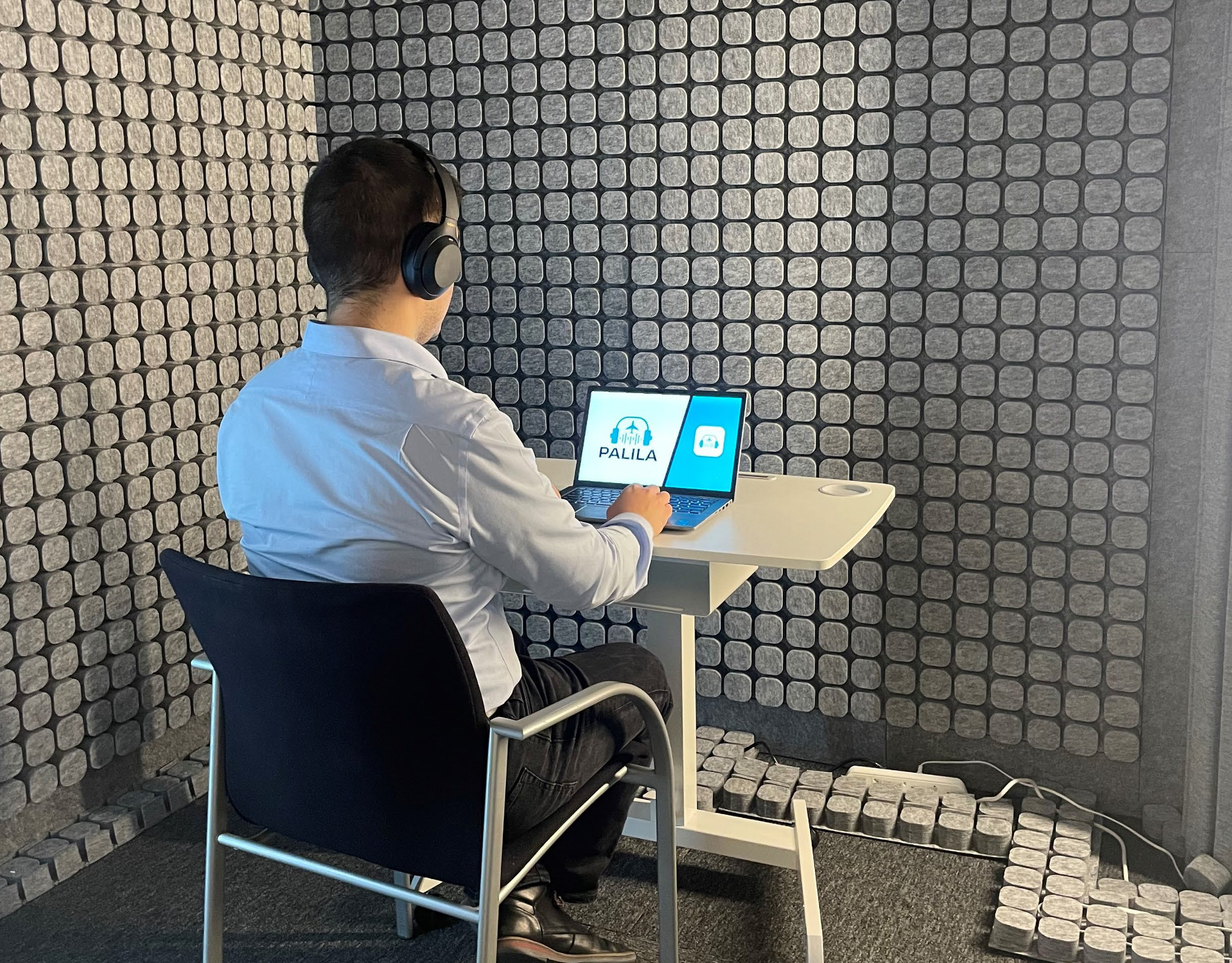Welcome to our lab: PALILA
PALILA is the PsychoAcoustic LIstening LAboratory located in the faculty of Aerospace Engineering of Delft University of Technology (room NB 1.23). It is a quiet, soundproof facility to conduct listening experiments about the human perception of sound. Our main focus are aerospace noise sources, such as aircraft, drones, and wind turbines.
The walls, the ceiling, and (part of) the floor of PALILA are covered with acoustic absorbing foam panels (see grey panels in the figure to the right) that prevent sound reflections (no echoes) and make the room extremely quiet (the background noise is even below the human threshold of hearing!).
More information about PALILA can be found in this poster and in the following reference: Merino-Martínez, R. et al. “Design and acoustic characterization of a psychoacoustic listening facility,” in the 29th International Congress on Sound and Vibration (ICSV), 2023.
Fun fact! Palila is also the name of a species of Hawaiian honeycreeper. This bird is critically endangered, sadly.
Motivation: Aviation noise
The continuous growth in air traffic and number of wind turbines threatens the health and quality of life of communities near airports and wind farms due to their noise emissions. At the same time, climate change restrictions demand revolutionary new technologies (e.g. distributed electric propulsion, counter-rotating open rotors) to reduce the environmental impact of aviation. These new aircraft configurations and other air vehicles like drones or urban air mobility (UAM) vehicles (commonly called “flying taxis”) will have a considerably different acoustic footprint.
Perception-influenced design
To ensure the societal acceptance of these devices, it is crucial to evaluate their acoustic emissions already during their design process, instead of looking for noise mitigation strategies later on, once the vehicle is built. Unfortunately, conventional sound metrics typically used in noise assessment, such as the sound pressure level in decibels, do not properly represent human hearing and fail to predict annoyance. The state-of-the-art approach of perception-influenced design advocates for including human perception within the design phase. A given geometry or configuration of the device to be designed is experimentally tested (if it is already manufactured) or synthetically made audible by using auralization techniques and noise prediction models. The noise annoyance of these sound waves is then evaluated using psychoacoustic sound quality metrics (see SQAT below) and listening experiments with human participants in facilities like PALILA. Lastly, the design parameters can be iterated until minimum annoyance and the desired performance are achieved.
Would you like to help us achieve quieter aircraft, drones, and wind turbines?
You can then participate in our (remunerated) listening experiments by subscribing to our mailing list.
Sound Quality Analysis Toolbox (SQAT)
We have developed an open-source MATLAB toolbox for sound quality analysis called SQAT to compute the aforementioned psychoacoustic sound quality metrics according to models found in the literature. We have compiled and validated the implementations of the metrics: loudness, sharpness, tonality, roughness, and fluctuation strength. On top of that, different psychoacoustic annoyance models are also available. You can find the latest version of SQAT in the GitHub below.






